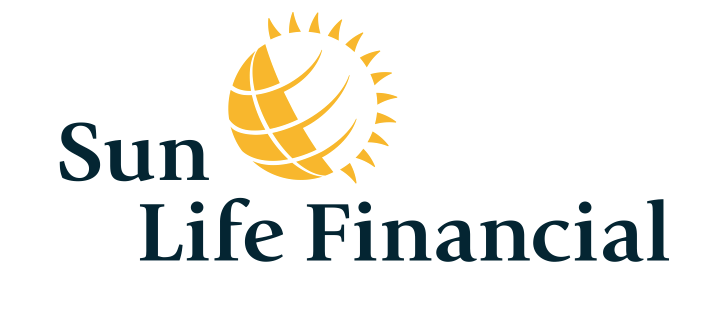Life insurance is a contract between an insurer and a policyholder in which the insurer guarantees payment of a death benefit to named beneficiaries when the insured dies. The insurance company promises a death benefit in exchange for premiums paid by the policyholder.
You buy life insurance because it’s the best way to protect your loved ones. It’s a financial decision, kind of. It’s actually an emotional decision. It’s about love and caring and the future.
Depending on what type of insurance you have, these events can be anything from retirement, to major injuries, to critical illness, to even death. Depending on your contract, the benefit can go to you, your spouse and children, your parents, or another set beneficiary.
Who should get a Life Insurance
Parents with minor children – If a parent dies, the loss of his or her income or caregiving skills could create a financial hardship. Life insurance can make sure the kids will have the financial resources they need until they can support themselves. More importantly, if the children have special needs, children who require lifelong care and will never be self-sufficient, life insurance can make sure their needs will be met after their parents pass away. The death benefit can be used to fund a special needs trust that a fiduciary will manage for the adult child’s benefit
Adults who own property together – Married or not, if the death of one adult would mean that the other could no longer afford loan payments, upkeep, and taxes on the property, life insurance may be a good idea. An example would be an engaged couple who took out a joint mortgage to buy their first house.
Elderly parents who want to leave money to adult children who provide their care – Many adult children sacrifice by taking time off work to care for an elderly parent who needs help. This help may also include direct financial support. Life insurance can help reimburse the adult child’s costs when the parent passes away.
Young adults who want to lock in low rates – The younger and healthier you are, the lower your insurance premiums. A 20-something adult might buy a policy even without having dependents if there is an expectation to have them in the future. More: Why do you need life insurance in your 20s?
Adult or Young adults who want to be insured and have a retirement fund – Most people don’t think of life insurance and investing the saved money when considering how a life insurance policy can help meet retirement-savings goals. Yet for many, it’s the most effective strategy. Permanent life insurance policies have a cash-value component that accumulates savings and can be invested
How Life Insurance Works
A life insurance policy has three main components.
Death Benefit – The death benefit or face value is the amount of money the insurance company guarantees to the beneficiaries identified in the policy when the insured dies. The insured might be a parent, and the beneficiaries might be their children, for example. The insured will choose the desired death benefit amount based on the beneficiaries’ estimated future needs. The insurance company will determine whether there is an insurable interest and if the proposed insured qualifies for the coverage based on the company’s underwriting requirements related to age, health, and any hazardous activities in which the proposed insured participates.
Premium – Premiums are the money the policyholder pays for insurance. The insurer must pay the death benefit when the insured dies if the policyholder pays the premiums as required, and premiums are determined in part by how likely it is that the insurer will have to pay the policy’s death benefit based on the insured’s life expectancy. Factors that influence life expectancy include the insured’s age, gender, medical history, occupational hazards, and high-risk hobbies. Part of the premium also goes toward the insurance company’s operating expenses. Premiums are higher on policies with larger death benefits, individuals who are higher risk, and permanent policies that accumulate cash value.
Cash Value – The cash value of permanent life insurance serves two purposes. It is a savings account that the policyholder can use during the life of the insured; the cash accumulates on a tax-deferred basis. Some policies may have restrictions on withdrawals depending on how the money is to be used. For example, the policyholder might take out a loan against the policy’s cash value and have to pay interest on the loan principal. The policyholder can also use the cash value to pay premiums or purchase additional insurance. The cash value is a living benefit that remains with the insurance company when the insured dies. Any outstanding loans against the cash value will reduce the policy’s death benefit.
Types of Life Insurance
The three basic types of life insurance policies are:
Term Life Insurance
As the name suggests, this type of insurance policy gives you coverage for a specific “term” or specified number of years (usually 20 to 30 years). Like most policies, a death benefit will be paid if the policyholder passes during the time period of the active policy.
Term insurance is typically less expensive and has one of the lowest upfront costs compared to other types of insurance. This is because it is bound by a specific time. It also gives you the biggest bang for your buck if your focus is family protection in case of untimely passing during the term. This is because you’re basically getting a pure life coverage without all the additional charges for features involving investments. However, the features that make it advantageous can easily become disadvantageous for you, depending on your need.
When you get term insurance, you have limited coverage based on your specific term. Term insurance premiums also escalate as you age due to greater sickness and mortality risks that come with it. And because term insurance is typically pure life coverage, you don’t get to build up capital like you would with other types of insurance. This means when your policy expires, so does the money you put up to keep it active.
Whole Life Insurance
Unlike term insurance, whole life insurance will pay for the face value or death benefit, whenever death occurs, as long as the policy is active. A portion of your premium payment also builds up as capital.
One of the best things about whole life insurance is that it guarantees an investment return. Payment schemes are also easy to understand because of fixed premiums. Couple that with a cash value that you can withdraw, borrow against, or pass the trust to your heirs, and you have a policy that’s perfect for young families.
The trouble with whole life insurance is that it’s designed to last for the policyholder’s whole life. That means the fund only matures once the policyholder reaches the age of 95 or 100. Premiums are generally more expensive than term insurance because of the investment aspect. While whole life insurance guarantees investment returns that are typically safe and predictable therefore returns are modest. This is in comparison to investments without such guarantees.
Variable universal life. Also known as VUL or investment-linked policy, it is a unique product because it offers protection and savings. It provides a sum of money in the time of death, and at the same time, it has invested cash value that may grow over time.
Endowment Insurance
Endowment insurance takes certain features from both term and whole life. Like term insurance, there is a focus on a specific time period. But unlike term, this time period (typically 10 to 20 years) is only set time for the fund to mature. Like whole life insurance, endowment life insurance also builds capital as you put in more into the policy.
One of the benefits of an endowment policy is after the term of maturity, it continues to build capital for you. The set time period means that it matures much faster compared to whole life, it guarantees a death benefit for beneficiaries of active accounts, and the face value is withdrawable to the policyholder after a certain number of years. This means you would have some money tucked away to use for your children’s college fund, for big-ticket purchases, or to pay off loans in the future.
Like whole life, guaranteed payouts from endowment insurance means that the returns will not be as big. A shorter-term for maturity also means more expensive monthly or annual premium payments compared to whole life or term insurance.
And that’s it for the basics of life insurance in the Philippines. Now that you’re armed with a little more knowledge, you can start shopping around for the best policy for you.
Get a Life Insurance Today
StockBytes! Owner is a Sun Life Financial Advisor.

Sun Life entered the Philippines in 1895 and established its Cebu operations in the 1960s. As of 2019, Sun Life is the number one provider of insurance products to Filipinos, they are been operating in the country for more than 120 years now!
Ready to start your financial journey? email us at [email protected] or follow our social media account and join our groups, Cheers!





